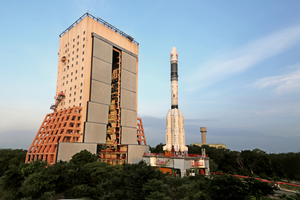
Mobilenews24x7 Bureau
What were the logic behind the RBI’s decision to withdraw 2000 currency notes and that too giving a lease of almost little less than five months. Was it to recover further black money which remains a mystery post the first demonetisation when two denominations were demonetised in a huff, sending millions to run here and there.
If the RBI itself will stop exchanging the Rs 2000 note, will it still be legal tender in practical terms from October 1st onwards? Can one still use it for buying goods and services? Can people refuse to accept it?
The central bank’s order has also created confusion because on the one hand, the RBI says that the Rs 2000 note will continue to be legal tender and while stating this it does not mention a deadline.
THE RBI’s announcement that it’s pulling the plug on the Rs 2,000 currency note brings the curtains down on its flawed introduction — as well as its pointless existence.
If none of this is true, then what is the point of having a deadline?
Why RBI has withdrawn Rs 2000 notes, what you should do with yours
Here’s a brief recap of the troubled history of the Rs 2000 currency note.
1. The introduction of the Rs 2000 note was self-contradictory as an idea by itself. The Prime Minister had shocked the nation by announcing demonetisation (de-recognising the high-value notes of Rs 500 and Rs 1000) arguing that it is in these high-value currency notes that bulk of the black money and money for terrorism is stored. To introduce a currency note of Rs 2000 defied this logic. The truth is — and the RBI is on record about this — most of the black money is stored in other assets like gold or property, not currency.
2. To compound matters, the disbursal of Rs 2000 notes was riddled with glitches. These notes were first “notified” under Section 24 (2) of the RBI Act. But soon it was realised that it was the wrong section. It is Section 24(1) of the RBI Act that gave the Centre the authority to issue banknotes, forcing the required modification in announcement. These notes were of a different size and as such could not fit into existing ATM machines; this forced all ATMs to be re-calibrated and ended up further delaying the “remonetisation” exercise while the whole country stood in endless queues.
3. The Rs 2000 notes did not have any of the highly anticipated security updates. Not surprisingly then, they were easy to replicate. As early as November 26, 2016, there were reports of counterfeit Rs 2000 notes. That the old currency notes were easy to counterfeit was one of the key reasons why the country was subjected to that shock on November 8.
4. Lastly, the Rs 2000 note failed in one of the fundamental purposes that money must serve: There are three fundamental roles of money — and think of a currency note issued by RBI versus a lovely cabbage that one grows in one’s kitchen garden as you read this. Firstly, it should be a store of value.
That is to say, the value of Rs 100 stays Rs 100 from one day to another. A cabbage loses value much faster than a currency note. Second, it should be a unit of account. That is to say that the price of a new laptop can be quoted in a currency note, but not in terms of a cabbage.
And three, it should be a medium of exchange. A Rs 100 note can be easily exchanged for a pen. It is in the third role that the Rs 2000 note failed rather miserably, especially in the beginning when it was introduced.
That’s because everyone in the market had Rs 2000 notes but no one could break it and use it for buying things. As a medium of exchange it was of very limited use, especially at a time, and for an economy, where small transitions, often below Rs 500 and even Rs 100 were commonplace.
The RBI has stipulated that any exchange of Rs 2000 note cannot exceed Rs 20,000 at a time. This means that if a person has saved up Rs 2 lakh in these notes — say for organising a marriage — they would have to stand in line 10 times (outside one of the 19 regional offices of RBI in the whole country) just to get back the full value of their own money.
Input sources The Indian Express






